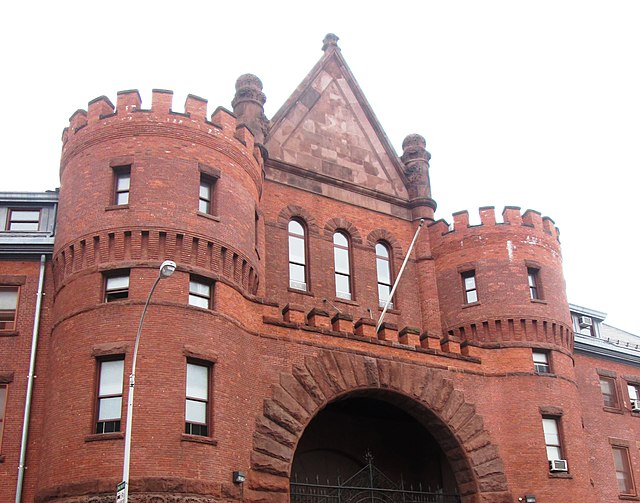
By Carol Tannenhauser
In 1979, Robert Hayes, a 26-year-old newly minted Wall Street lawyer, took New York State and New York City to court and won the legal “right to shelter” for single homeless men. It was a landmark case, Callahan vs. Carey, that reverberates today as the city grapples with an influx of tens of thousands of migrant asylum seekers.
“I often tell law students that they’re the ones who have to bring the next landmark case,” Hayes said in a recent telephone interview with West Side Rag. “An attorney more experienced and wiser than I probably would not have brought the Callahan case in the first place.”
In the 1980s, the mandate Hayes won was expanded to include women and families. It’s become the cornerstone of the massive, much-maligned New York City shelter system, which has ballooned into a multi-billion-dollar industry. Last night alone, the city sheltered around 80,000 people — nearly half of them migrants, who are also eligible for the right to shelter.
We wondered what Hayes, who now heads the 14-center Community Healthcare Network (“we turn no one away”), thinks of Callahan vs. Carey more than 40 years since it was decided. Does he have any regrets?
Robert Hayes: I mean, obviously, there are better solutions to homelessness than shelter, but that was and is a legal lever we have. I’m sorry that the right to shelter gave government an excuse not to move to a right to housing, but for many mayoral administrations since, the pressure and cost of sheltering people created an economic incentive to build affordable housing. And just imagine — 80,000 people in shelters last night — imagine 80,000 [more] people on the streets of New York. It is ridiculous in retrospect that we had to learn that homeless people did not want to live on the streets.
West Side Rag: What about the homeless people who do remain on the streets?

RH: Right now, say, there are four or five thousand people living on the streets, even with a right to shelter. The people who are very fragile — congregate shelters don’t work for them. I am a huge fan of safe havens [an emerging form of shelters that are smaller, less restrictive, and more service rich than traditional ones. See here]. Safe havens work. If we had another couple thousand safe-haven beds in the city, without forcibly removing people, 75% to 80% of the folks on the streets would come inside. Maybe not on day one, but within a bit of time. We waste so much money on outreach because the outreach workers do not have access to the single-room safe-haven beds that we need so badly.
WSR: A safe haven is a big issue in our neighborhood, as are the migrants.
RH: I gotta say it’s pretty impressive how many shelters they have opened up so quickly. I completely agree with the — I’ve probably never said this in my life — I completely agree with the congressional delegation from the city pleading to let these migrants start working right away. These folks are not going to be homeless long once they get jobs. So, probably, a safety valve to slow the need for more shelter beds is: work.
WSR: But then, where do they live?
RH: Well, they’re going to find places, because they’re going to have income. They’ll probably be like every other immigrant group for a while, you know, sharing places. How long did Chinese immigrants downtown have shifts of people sleeping in small apartments? It’s happened for 200 years in New York. This may be a different story, but this migrant surge — given the need for workers in New York and surrounding states — is actually, in the long haul, going to be an incredible benefit to society because of the workers it will provide.
For a full understanding of the evolution of the Right to Shelter, see Part 1 of this series here.









I don’t disagree with the optimistic view that this wave of immigration will have long-term benefits to NY.
However, the idea that “the right to shelter gave government an excuse not to move to a right to housing” suggests some really strong ideology over experience. NYCHA should be seen as a cautionary tale of the limits of government-provided long-term housing.
Also, it’s a bit depressing that the right to shelter became such a financial bonanza for so many organizations.
Very interesting. The challenge then isn’t the immigrants who want to work. It’s those who are here and don’t? But they feel entitled to free housing in Manhattan? How do we address that?
Yes, Let Them Work (legally) and then get them out of the shelters and contributing to society. Let’s be honest, most came here to work. And let’s hope Congress implements some immigration policies asap.
Does this right to shelter law apply to the entire state as well as the entire nation as it seems this was a national case?
No. It applies to NYC.
Peter, are you sure. It was a right established under the State Constitution which means it should apply to the entire state.
Elizabeth – I think you are correct. The court case centered on the NYS Constitution which would mean it applies to the entire state. However, 2 years after the ruling in the court case, NYC adopted the right to shelter when they consented to the ruling in a settlement with the parties to the litigation. Given the express consent, I think that everyone assumes that right to shelter only applies in NYC.
I thought Robert Hayes had moved to Vermont?
Shameless and reprehensible, then and now. This policy fails both the homeless and the public, enriching only the politically connected class, on both sides.
Bad law makes bad policy, but this has become entrenched bad policy because the Progressive and Conservative Establishments made a devils’ bargain to milk and bilk the public coffers.
I would vote for any politician who would commit to fighting and changing this political atrocity, but that would require an honest politician, in New York no less.
I am almost at a loss for words. The UWS had a brilliant, honest, local neighbor (born and raised in NYC) lawyer Maria Danzilo who wanted nothing more than to fight for her community. Compassionate and fiscally responsible, she recently ran for city council and state senate..lost both times. NO one would have advocated for you more! I’m literally stunned by your comment and wondering how you missed this travesty.
I think when this was implemented it was for those residing in NY. You can’t expect any state that has massive homeless population to house buses from other countries. While yes we should help , you should be a resident of NY. Other states could help but political views overide human needs.
I think you need to define “resident” properly first. I’m not a lawyer, but my understanding is that to be a resident of a state or municipality, you need to have an address at which you actually live for a specified percentage of the time. By that definition, the homeless folks aren’t residents of anywhere.
And be in the country legally…
Very good article…. and very interesting!
Yes we should help, but to what extent. Our homeless are not being helped, because all efforts are being given to the migrants. What about our tax paying citizens being shorted on our services. We’re paying the tab on this and getting no return. By the way, I’m a naturalized citizen and veteran. We had to earn what you are now willing to give away
“I’m sorry that the right to shelter gave government an excuse not to move to a right to housing, but for many mayoral administrations since, the pressure and cost of sheltering people created an economic incentive to build affordable housing.”
Truer, more critical words, have rarely been spoken. Because it WAS an excuse for the City (and State) not to provide actual housing (including supportive housing for those with mental and other disabilities) instead of building congregate shelters, which themselves became a nightmare for many homeless persons.
Just think about. I mean, REALLY think about it. Had the City originally been forced to provide ACTUAL housing – even minimal housing – instead of merely “shelter,” the current crisis would be a fraction of what it is (i.e., there will ALWAYS be “homeless” people living on the street, absent draconian laws that would allow people to be committed against their will).
As with so many things in government, good intentions led to badly implemented bad policies.
It is way past time that the City and State stop abrogating their responsibility to provide HOUSING to anyone who needs it. Had the City and State thrown the same billions, possibly trillions, of dollars over the past 45 years into REAL housing – as opposed to building congregate and other “shelters” – they could have built enough housing for anyone who needed it.
And now we hear all this talk about hundreds of office and other buildings empty largely due to the pandemic (and the work-from-home trend). Why not convert these into housing? And NOT for the rich and wealthy, but for the homeless, impoverished, new immigrants, etc.?
C’mon! After 45 years, this is not rocket science!!